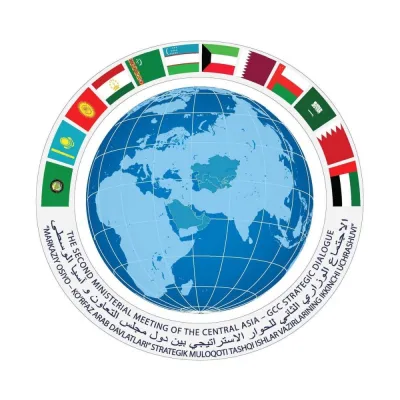Reuters
Most of the Gulf’s rich oil exporting economies will cope comfortably with an era of rising interest rates, but fund flows within the Gulf may shift and fragile state finances in the less wealthy countries will become more exposed.
Economies and markets around the world are bracing for the first US interest rate hike in more than eight years, which is likely to be the first of a series as the Federal Reserve slowly returns to normal policy after the global financial crisis.
A Fed meeting this week will release fresh economic and interest-rate projections that, some analysts believe, could open the door to a rate hike as soon as March. That could start a mass migration of money into US dollar assets, sucking liquidity from other economies.
As a whole, the Gulf is better equipped to withstand this threat than almost any other region in the world. Its huge current account and state budget surpluses mean it does not need to rely on external financing, so it does not need to fear tighter global liquidity as many other emerging markets do.
But the Gulf will be compelled to imitate US rate hikes because of its currency pegs to the US dollar - allowing large interest rate gaps to open up could be destabilising. Higher interest rates look certain to slow economies to some degree.
And within the Gulf, some countries and markets will fare better than others. Bahrain and Oman, which don’t have big surpluses, may be among the relative losers. Dubai, its economy heavily dependent on its interest rate-sensitive real estate sector, may also fare less well.
“Growth will be slower, inflation lower and capital inflows higher,” James Reeve, deputy chief economist at Samba Financial Group in London, said of the Gulf.
Saudi Arabia, the region’s biggest economy, will continue growing but “with oil prices expected to drift, I think the rate hike will come at a time of slowing growth, which is obviously not ideal.”
When the US rate hikes start, Gulf central banks are expected to follow suit quite quickly - some of them within days, local central bank officials and money market traders say.
Kuwait has slightly more freedom than the others because it does not have a direct currency peg to the dollar but uses an undisclosed currency basket, which analysts believe is dominated by the dollar.
When US interest rates were falling in 2008, some central banks in the six-nation Gulf Co-operation Council were able to delay following the Fed. For example, Qatar’s central bank did not change its policy rates between September 2008 and August 2010 even after the Fed slashed its rates near zero.
But when US rates are on the way up, Gulf central banks are expected to respond much more quickly, in order to eliminate the possibility of capital outflows destabilising their markets.
“GCC central banks can afford some deviation from US monetary policy, but this is relatively small and cannot be sustained over time given the peg to the dollar,” said Farouk Soussa, Citigroup’s chief economist for the region. “So rising Fed rates will mean a rise in GCC rates, whenever that happens.”
The impact on economic growth in the GCC looks likely to be minor, however. That is because Gulf interbank money markets are still shallow compared to markets in developed countries, limiting the impact on local deposit and lending rates of official rate hikes - especially at the start of a tightening cycle, economists say.
Since GCC banks are less dependent on the money markets than their foreign counterparts, obtaining cash through other means such as deposit growth and retained earnings, corporate lending rates in the Gulf may not rise as abruptly as in other regions.
A 2012 working paper on monetary policy transmission in the GCC by the International Monetary Fund found a 1 percentage point jump by the Fed funds rate would tend to reduce non-oil gross domestic product in the GCC by only around 0.1% - not much for economies growing at rates of around 4%.
Fiscal policy remains much more important than monetary policy in driving GCC economies. The budget surpluses of major Gulf governments suggest state spending will stay strong - even if growth slows from recent years’ rapid pace - unless oil prices fall steeply for a long period.
The biggest impact of interest rate hikes in the Gulf would probably be on inflation; M2 money supply would be reduced by 0.6% and consumer price levels by 0.8% 10 quarters after the interest rate shock, the IMF study estimated.
This could actually be welcome for some booming Gulf countries which might already have begun tightening policy if their currency pegs had permitted it. Inflation in Qatar, where heavy infrastructure development is heating up the economy, rose to 3.8% in August, the highest since 2008.
Dearer money will be less welcome for the GCC’s two smaller, weaker economies, however. Bahrain and Oman both lack the ample oil reserves of their bigger neighbours so they have less room to manoeuvre if global market conditions become more difficult, even though they can count on aid from allied Gulf nations in emergencies.
Rate hikes “could be timely for Qatar, whose economy is showing signs of overheating. However, for countries with fragile balances like Bahrain, it could be bad news,” said Selim Cakir, chief economist for Turkey and the GCC at BNP Paribas.
Bahrain’s state budget deficit is already expected to swell to a five-year high of 5.0% of GDP next year from an estimated 3.7% in 2014, according to analysts polled by Reuters. Higher interest rates would make financing that gap more expensive.
Oman has been running budget surpluses, but the oil price which analysts estimate it needs to balance its budget has now risen to $102 per barrel, from just $61 in 2009. That is above the current Brent crude price of about $96.
The result is that Oman is likely to have to expand its government borrowing programme and as soon as next year resort to debt sales in the international market for the first time since 1997 - at a time of rising interest rates.
Tighter monetary policy could also prove inconvenient for Dubai, which has boomed in the last several years on the back of a spectacular recovery in its property market. Real estate and construction accounted for over 22% of the emirate’s GDP in the first quarter of this year, a high ratio.
This summer there have been signs that the market’s uptrend is slowing as prices return to levels hit before Dubai’s 2009 financial crisis; higher interest rates could ultimately put a cap on prices and real estate activity.
US rate hikes “could hurt the recovery in the real estate sector of Dubai and would increase the cost of financing for the new and existing projects,” Cakir said.
Rising interest rates could also make it more expensive for Dubai to refinance the debt mountain left over from the 2009 crash; the IMF estimates the emirate’s government and state-linked firms face some $85bn of debt maturing in 2015-2019.
Some of Dubai’s debt restructuring plans, particularly the $25bn deal for state-owned conglomerate Dubai World, depend on future sales of global assets which may become harder as interest rates climb.
The outcome may be a shift of money flows within the GCC, away from Dubai where frothy markets have benefited from years of rock-bottom interest rates, and towards economies - like Saudi Arabia’s - which can cope most comfortably with an era of more expensive money.



